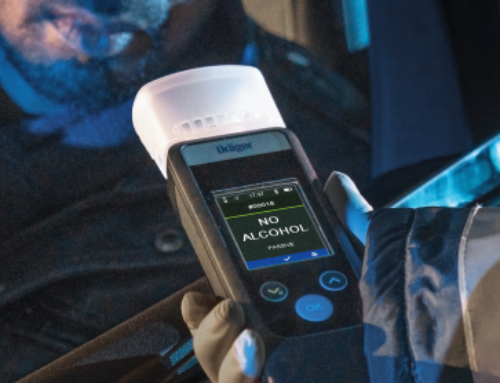Faulty tyres ‘driving up test fail rates’
 Damaged tyres are driving up annual test failure rates on trucks since the end of lockdown, Phil Lloyd, the head of Engineering at Logistics UK told delegates at the organisation’s first Transport Manager Conference of 2022.
Damaged tyres are driving up annual test failure rates on trucks since the end of lockdown, Phil Lloyd, the head of Engineering at Logistics UK told delegates at the organisation’s first Transport Manager Conference of 2022.
There were more first-time failures for trucks, although the pass rate at retest was better, he said, indicating that preparation standards had slipped. Trucks failing on tyres had gone up, but not as much as on trailers where the tyre failure rate had gone up from 0.7 to 2.7 per cent. Ironically, the overall failure rate for trailers was unchanged.
Mr Lloyd added that the dominant tyre fault was for cuts, rather than wear. There had been no change in legislation, so either more vehicles were being presented with cuts unspotted by maintenance providers, or DVSA had become more zealous.
Unsurprisingly, older vehicles were more likely to fail their tests. Just three per cent of vehicles failed their first test at 12 months old, but 26 per cent of 12-year-old vehicles didn’t pass first time. He suggested that operators running older vehicles on should take note and subject them to more frequent periodic inspections.
Vehicles from smaller fleets were also more likely to fail. He suggested that this was because the nominated transport manager was often multi-tasking across a wide variety of functions, sometimes including driving, as well as managing drivers and supervising the maintenance of vehicles.
DVSA’s OCRS scheme certainly worked when it came to predicting which operators were likely to present an unroadworthy vehicle for test: the failure rate for operators with Earned Recognition was just 1.74 per cent, but 35 per cent for those rated as a Red risk.
So, why were vehicles which were prepared for a pre-arranged test still failing?
 He suggested that while workshop engineers were good at their jobs, they regarded that job as being working on vehicles rather than inspecting them. Engineers would start to inspect a vehicle, find a fault, and they try to fix it on the spot, getting distracted from the inspection process. In contrast, DVSA vehicle testers would work through the entire vehicle methodically, checking everything and recording the faults as they were found.
He suggested that while workshop engineers were good at their jobs, they regarded that job as being working on vehicles rather than inspecting them. Engineers would start to inspect a vehicle, find a fault, and they try to fix it on the spot, getting distracted from the inspection process. In contrast, DVSA vehicle testers would work through the entire vehicle methodically, checking everything and recording the faults as they were found.
At the roadside, defective tyres remained the top reason for a prohibition.
However, vehicles that underwent periodic inspection by a third-party workshop were a staggering 78 per cent more likely to attract a roadside prohibition than those that were inspected in-house.
There was a message here, Mr Lloyd suggested: “If your workshop isn’t doing the job right, then change it!”
Complacency was a danger: long-established operators were more likely to attract prohibitions than new starts.
Rather less surprisingly, skip wagons were among the most likely vehicles to attract prohibitions: short journeys and rough working conditions taking an obvious toll.
He warned operators buying used vehicles to have emissions tests run on them prior to purchase. Part of the vehicle testing process was checking the emissions control system was working and vehicles fitted with cheat devices such as AdBlue emulators or with ‘chipped’ ECUs would not only fail the test, but also attract the interest of the traffic commissioners.
Drivers had “a big part to play in making sure a vehicle was fit for use,” he said.
“Drivers who don’t check their vehicles probably won’t see faults, wont report them and then you won’t know about them.
“If drivers don’t know what’s expected of them, then they will fall short of your expectations.
“The maintenance sheets you get back from periodic inspections should not show faults that your drivers should have reported.”
Conversely, drivers should be trained and equipped to do the proper checks, with equipment such as torches and tyre tread gauges, and given appropriate time at the start of each shift or handover to do so.
“Don’t under-estimate the value of relevant training. Driver CPC training needs to be relevant and interesting. Avoid treating the Driver CPC as ‘sheep dipping’: running the drivers through the same process every five years. Make it interesting and relevant. Drivers need to know what’s expected: are they familiar with their vehicle, and its functions and add-ons?
“Beware of reliance on verbal reports: recurring problems need to be recorded so they can be followed up: for instance, why does that warning light keep coming on?
“Records need to be kept. Is the process auditable?
“Remember, what gets checked gets done!
“You need a channel for drivers to report possible defects, and these should be assessed by a competent person with appropriate engineering knowledge and authority to take action by, for example, taking a vehicle off the road or authorising a repair.
“It’s easier to manage this with an in-house workshop than a third-party one,” he said. “But is a vehicle does have to be driven to an outside workshop for rectification of a not-immediately dangerous fault then the driver should be given details of the repair to show to the authorities if necessary.
“This saves your OCRS, and saves the driver from getting a fixed penalty,” Mr Lloyd reminded the audience.
Drivers needed to be encouraged to check vehicles during the working day: “Look at the vehicle and its load,” he urged, pointing out that ‘defective lamps’ were quite a major cause of prohibitions.
The competent person should operate an effective system to follow faults through to rectification and the vehicle’s return to service. Defects seriously compromising safety should take the vehicle off the road, and the workshop should provide a recorded conformation that the repair had been completed and the vehicle was now safe before it was used again.
‘Nil defect’ reporting had the advantage of getting the driver to formally declare that he had inspected the vehicle, and gave the company some redress if he hadn’t done the job properly. It also helped in creating an auditable system.
He warned that inspection records should be retained for a minimum of 15 months, and if a new system for recording and storing records were introduced then the legacy system should be retained for at least 15 months too.
Analysis of records can aid preventative maintenance, by for example revealing when a component is likely to fail through wear and tear, he concluded.












